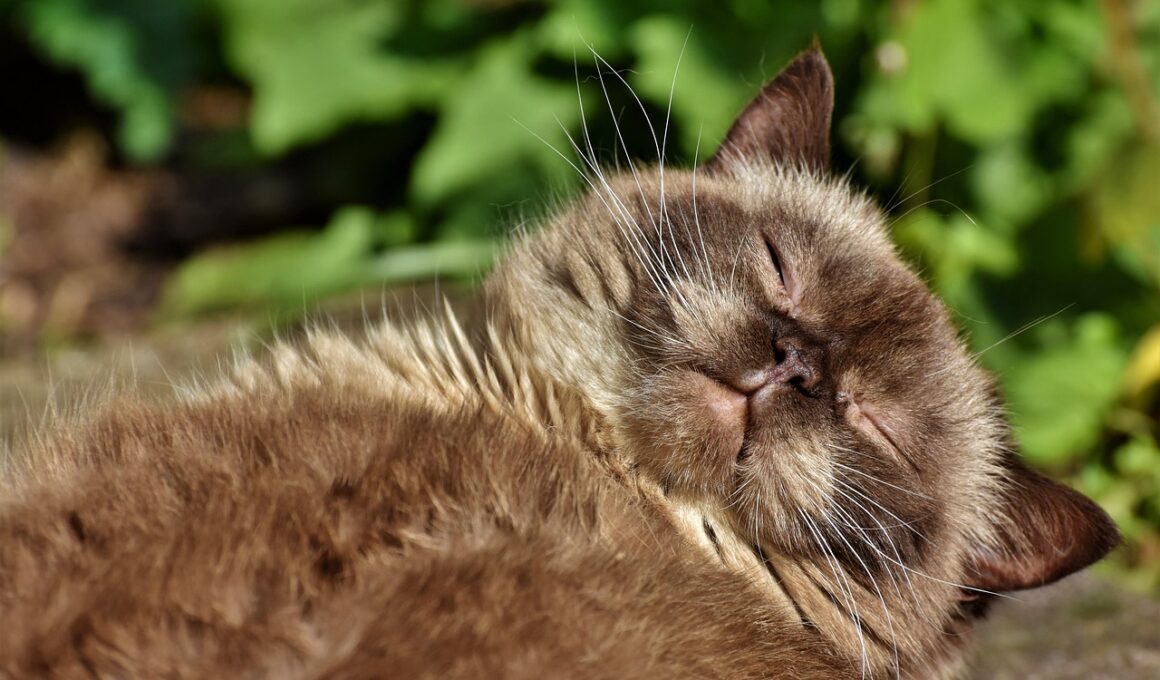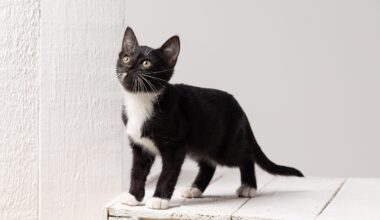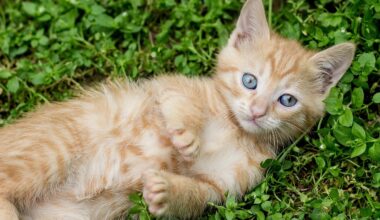Breeding for Health vs. Breeding for Appearance: Ethical Dilemmas
The world of cat breeding presents a range of ethical dilemmas that often pit health against physical appearance. Many breeders prioritize specific traits and appearances that conform to breed standards set by various registries. While aesthetic appeal is significant, it raises crucial questions about the long-term health consequences of certain breeding practices. Breeding practices focused primarily on looks may inadvertently lead to a range of genetic disorders and diseases prevalent in certain breeds. Breeders may not be fully aware of how these genetic issues develop, resulting in a dilemma between generating profits through prized appearances or promoting the breed’s health. Understanding the implications of breeding methods requires thorough education among breeders and potential cat owners alike. Ultimately, prioritizing health and longevity supports breed integrity and quality of life for felines. This dilemma extends to potential buyers, who also play a role in the decision-making process. When cat owners choose to focus on health rather than mere aesthetics, they contribute to a shift in ethical standards, thereby influencing future breeding practices significantly. This article aims to explore the fine balance between breeding for health and appearance in cat breeds.
The standardization of cat breeds has historical roots, leading to the establishment of specific appearance benchmarks. Many cat shows reward breeding that aligns with these standards, encouraging genetic practices detrimental to the animals. Common examples include brachycephalic breeds with shortened skull structures, resulting in respiratory issues. Additionally, certain breeds are more susceptible to hereditary conditions due to a narrow genetic pool, which might be appealing in terms of looks but poses significant health risks. Breeding solely for appearance can result in purebred cats suffering from chronic health problems, and various organizations recommend careful consideration of health factors in breeding decisions. Breeders who focus solely on aesthetics often ignore the broader picture, prioritizing financial gain over the well-being of the animals they produce. They ignore the fact that responsible breeding practices should encompass not only the desired physical traits but also a commitment to improving overall health. There is a growing movement advocating for a balance between aesthetic breeding and health considerations, supporting the idea that a beautiful cat can and should also be a healthy cat. Understanding this connection will help to guide future breeding ethics.
The Role of Genetic Testing in Ethical Breeding
Genetic testing has emerged as a vital tool for responsible breeders aiming to prioritize health over superficial traits. By employing DNA tests, breeders can screen for diseases prevalent among specific breeds, helping to avoid passing on genetic disorders to future generations. This practice not only aids in producing healthier cats but also conveys a commitment to ethical breeding practices. With advancements in technology, it has become easier to identify carriers of genetic diseases, thus allowing informed decision-making in breeding pairs. Ethical breeders who utilize genetic testing can lead the charge against irresponsible breeding practices promoted by aesthetics alone. While aesthetically pleasing features may draw attention and increase market appeal, they should never come at the cost of health or suffering. As more breeders recognize the necessity of genetic testing, the industry will likely evolve, prioritizing animal welfare over profit margins. Moreover, educating potential cat owners about the importance of genetic health can further influence the market, pushing for healthier breeding practices. This essentially creates a more robust cat population that not only looks good but thrives throughout their lives.
Moreover, it is essential to engage prospective cat owners in discussions about the implications of breeding practices. Engaging owners in this dialogue fosters a culture of awareness surrounding the importance of health and ethics in the breeding process. Many potential cat owners are unaware of the health issues associated with certain breeds, believing that physical appearance equates to overall quality. Therefore, it is vital for breeders to provide transparent information about the health risks involved with various breeds. They should not only showcase flawless aesthetics but also focus on educating prospective owners about responsible ownership. Open discussions can help prospective owners understand the challenges that come with breed-specific health issues, creating a ripple effect to embrace health-forward choices. Providing adequate resources and clear explanations helps future owners make informed decisions. As awareness spreads, owners may increasingly prioritize health over appearance in their selection process. In doing so, they contribute significantly to the evolving dialogue around ethical breeding, encouraging breeders to focus on producing cats that possess both beauty and sound health.
The Importance of Mixed Breeds
Encouraging the adoption of mixed-breed cats represents a viable solution to counteract the issues stemming from selective breeding. Mixed breeds tend to illustrate greater genetic diversity, which generally leads to increased health resilience compared to purebred cats. This genetic variation appears when two distinct breeds intermingle, introducing new genes into the population and minimizing the prevalence of inherited diseases. Consequently, potential cat owners should appreciate the advantages mixed breeds can offer. Not only do these cats often experience fewer health complications, but they also often embody more varied appearances and personalities. Taking a mixed-breed cat into one’s family promotes ethical choices and reduces the burden of supporting breeding practices that prioritize looks. Adopting mixed breeds serves as a vote against narrow breeding practices that compromise animals’ health. Many humane societies actively promote the benefits of adopting mixed breeds and their potential to encourage healthier feline populations. Additionally, public awareness campaigns can encourage potential owners to consider the ethical implications of choosing a purebred cat over a mixed breed, actively supporting a shift in industry norms.
Engaging in conversations about ethics within cat breeding is crucial for fostering change in breeding standards. As breeding practices evolve, so do the ethical responsibilities of both breeders and owners. The emerging consensus underscores the necessity of prioritizing health alongside appearance when creating the next generations of cats. Ethical breeders are pivotal in leading the industry toward a future where cats glorify not only physical beauty but also vitality and sound health. The collective aim should be to establish a breeding paradigm that embraces diversity and improves overall feline health. Furthermore, changes in market demand can potentially encourage breeders to reconsider what constitutes marketable traits. As awareness grows, it’s likely to raise the level of scrutiny placed on breeding practices, ushering in a new era of integrity in the cat breeding community. Cats that are bred with health in mind will ensure a better life for each feline, contributing positively to the breed and the overall species’ future. Thus, sound ethics must be at the forefront of all breeding discussions to create a healthier future for our feline companions.
Conclusion: Health Matters Above All
In conclusion, health should always take precedence over breeding for mere appearance. The ethical dilemmas surrounding cat breeding necessitate informed conversations and actions within the breeding community and potential owners. Prioritizing physical traits can lead to significant health issues, ultimately undermining an animal’s well-being. Breeders must embrace their responsibilities to advocate for health-driven practices and educate buyers about the importance of genetic health. It is essential to recognize that breeding should aim for both aesthetic beauty and sound health, promoting breeds that flourish for generations. Mixed-breed cats symbolize the future of ethical breeding, highlighting that genetic diversity can produce vibrant, healthy companions. By choosing to adopt mixed breeds, owners can resist harmful breeding practices and support a movement directed toward health. With continuous advancements in genetic testing combined with advocacy for ethical standards, the breeding community can evolve toward practices that focus on the happiness and health of felines. The conversation surrounding health in cat breeding is ongoing, and your participation contributes significantly to this vital ethical discourse.


